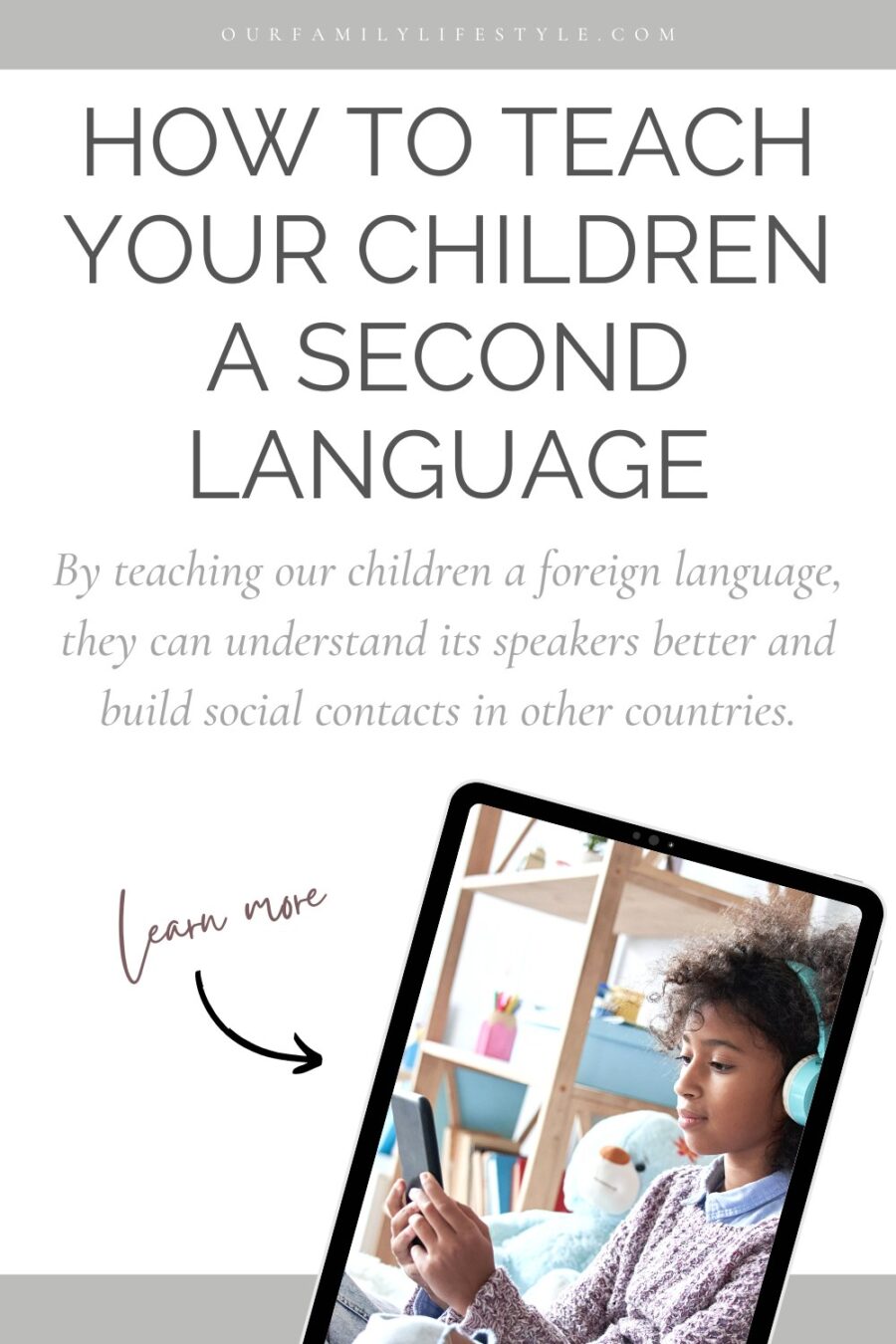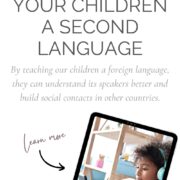How to Teach Your Children a Second Language
Do you want to introduce your youngster to a new language? Many parents do, and there are many reasons behind it.
By learning a foreign language, we begin to understand its speakers better and learn how to build social contacts in another country.
It also helps to interact with people whose thinking and perception of the world differ from ours.
Help Kids Learn a Foreign Language
However, not everyone knows the most efficient learning approach.
In this article, we will share valuable tips on how to teach your kids a second language.

Use Apps
Using special digital apps is a good idea if your child already goes to school.
First of all, it won’t be boring. Secondly, kids usually adore game-like learning experiences.
However, it might be challenging to choose a perfect app; you might learn more about Mosalingua here or read real users’ reviews about other programs. The more—the better.
Focus on the applications with an easy, all-in-one learning approach.
To ensure a well-rounded language learning experience, consider adopting a comprehensive input approach.
Ensure that the tool you pick offers listening, speaking, and grammar exercises to cover all language aspects.
For instance, you could check out FabuLingua here to see if it meets your child’s needs. Moreover, apps often track progress, which is beneficial for both parents and children
Repetition Is The Mother Of Knowledge
Kids pick up a new language by immersing themselves in the culture and using it often.
You may use this method by first completing an exercise in English today and then doing it in the target language the day after tomorrow.
For the first time, you make an egg-carton train with your kid; you may want to stress the English words.
A second language would allow you to repeat the exercise and use the same vocabulary.
Let Music Be On Your Side
Do your kids like some songs? Let them listen to it in a new language! After you listen to the words a sufficient number of times, they find a way into your memory.
That’s why taking a song that the children are already familiar with and playing it for them in another language is a fantastic approach to getting things started. The same goes for favorite cartoons, fairy tales, etc.
Use Movements And Emotions
Children’s language comprehension is enhanced when they are taught to pair gestures with specific vocabulary terms.
Your kid will learn and retain more words if you use moves, emotions, and physical demonstrations to go along with them.
This way is also beneficial because it will create positive associations.
A child will remember how fun it was to learn a new language and will do it with pleasure next time.
Add Some Studies
Effortless and fun activities are nice, but a child should also put some effort into valuing new knowledge and skills.
You may help your kid learn language more effectively by ensuring that they are exposed to it meaningfully.
What can be an example of teaching children a foreign language in this context? Making a rainbow is a great scientific project to do while discussing weather terms with your kid.
One Person – One Language
The process of learning a foreign language for children is a lot easier if one of the parents is a native speaker. You are lucky if you are in such a position.
Each parent is rearing the kid with a whole separate language. For example, a father can speak French to a child, and a mother speaks English.
Another variant is speaking one language at home and using another one in public. It guarantees your kid receives regular exposure to both languages.
This approach is often cited as one of the finest methods to make your kid bilingual from early childhood.
Put Your Kid In Touch With A Native Speaker
Children as young as nine months were exposed to Mandarin Chinese via audio clips, movies, and encounters with native speakers in research by Patricia Kuhl. The study indicated that social interactions had a great learning effect.
On the other hand, babies who had only been exposed to the language via media did not show any significant linguistic advances.
Find someone who speaks both English and the language your kid is learning to spend some time with them.
With this individual on hand, your kid can interact in the target language during playdates and outings.
Label Anything You Find Around The Home
This piece of advice is geared toward children aged 4 to 8 years old. It’s an excellent idea to name items that kids frequently see so that they may learn new terms in the language you’re trying to teach them.
Mark important items such as the refrigerator, furnishings, gadgets, etc.
If you are not a native speaker, you will find that this is a helpful approach to taking up new terminology for yourself as well.
Conclusion
Teaching your child a foreign language will bring many benefits in the future.
You might use modern apps, music, videos, or gaming methods to achieve such a noble target.
It’s also recommended to make your kid talk to native speakers if possible. The main thing is to pick the technique that works for you! Best of luck!




